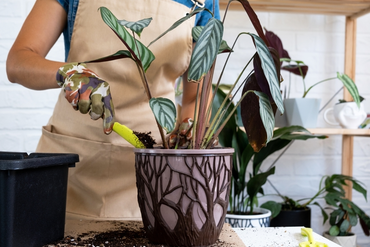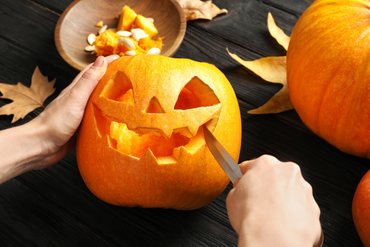While Japanese knotweed's appearance might have initially appealed to Victorian gardeners, its invasive nature makes it a unwelcome guest in modern gardens. This rapidly spreading plant can cause significant damage, pushing through paving cracks and quickly overtaking garden spaces. Fortunately, with careful management, eradicating Japanese knotweed is achievable.
Identifying Japanese knotweed
Identifying Japanese knotweed (Fallopia japonica) is straightforward with a little knowledge of its seasonal appearance.
- In spring, Japanese knotweed emerges with reddish-purple shoots resembling asparagus spears.
- Japanese knotweed leaves are heart-shaped with a reddish tinge when young, maturing to green. Their alternating growth pattern on the stem creates a distinctive zig-zag appearance, a key identifying characteristic.
- During summer, Japanese knotweed develops tall, hollow, bamboo-like canes adorned with creamy white flower tassels.
- As autumn arrives, the leaves of Japanese knotweed turn yellow and fall, while the canes brown and die back, remaining standing throughout the winter months.

Knotweed look-alikes
Before panicking about a potential Japanese knotweed infestation, it's important to rule out some common look-alikes. Several plants share similar characteristics at certain growth stages, so double-check if your plant might be one of these less invasive species.
- While bindweed (Convolvulus arvensis) also features heart-shaped leaves, they are significantly smaller than those of Japanese knotweed. Unlike knotweed, bindweed is a climbing plant that twines around other plants rather than producing upright canes. In summer, bindweed displays distinctive large pink or white trumpet-shaped flowers.
- Himalayan honeysuckle (Leycesteria formosa) is a vigorous deciduous shrub that shares some visual similarities with Japanese knotweed. It also has tall, hollow canes and heart-shaped green leaves. However, a key difference lies in the flowers: Himalayan honeysuckle boasts larger white flowers encircled by distinctive burgundy-colored bracts, unlike the creamy white tassels of Japanese knotweed.
- Russian vine (Fallopia baldschuanica), a vigorous twining climber, shares some visual similarities with Japanese knotweed, boasting heart-shaped leaves and delicate sprays of tiny white flowers in summer. However, a key distinction is that Russian vine does not produce the characteristic bamboo-like canes of Japanese knotweed.
- Tall and possessing hollow stems like Japanese knotweed, Himalayan balsam (Impatiens glandulifera) distinguishes itself with longer, thinner leaves and summer displays of pink flowers. It's also a prolific self-seeder, readily spreading if seed production isn't controlled.

Knotweed treatment & disposal
Glyphosate, a systemic weedkiller, is the most effective treatment for Japanese knotweed, though complete eradication usually requires multiple applications over two to three years. Given the legal regulations surrounding Japanese knotweed management and control, it's strongly recommended to seek professional help for its removal from your property.
Important: Never dispose of Japanese knotweed waste in your compost heap, green waste bins, or household waste. This is illegal and will contribute to the plant's further spread.
For plant advice specific to your garden, visit our garden centre in St. Albans. Our friendly staff are always happy to assist you.




